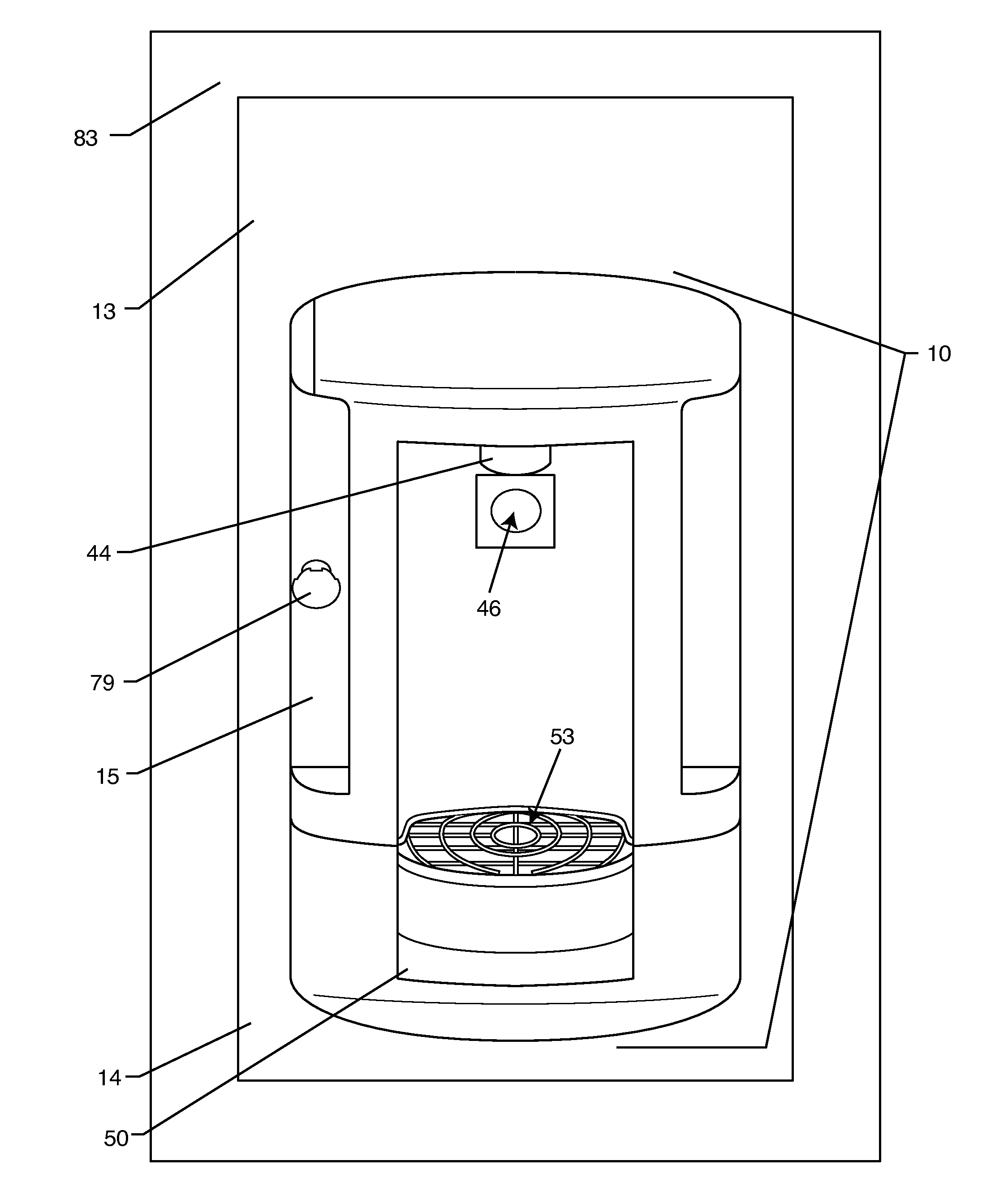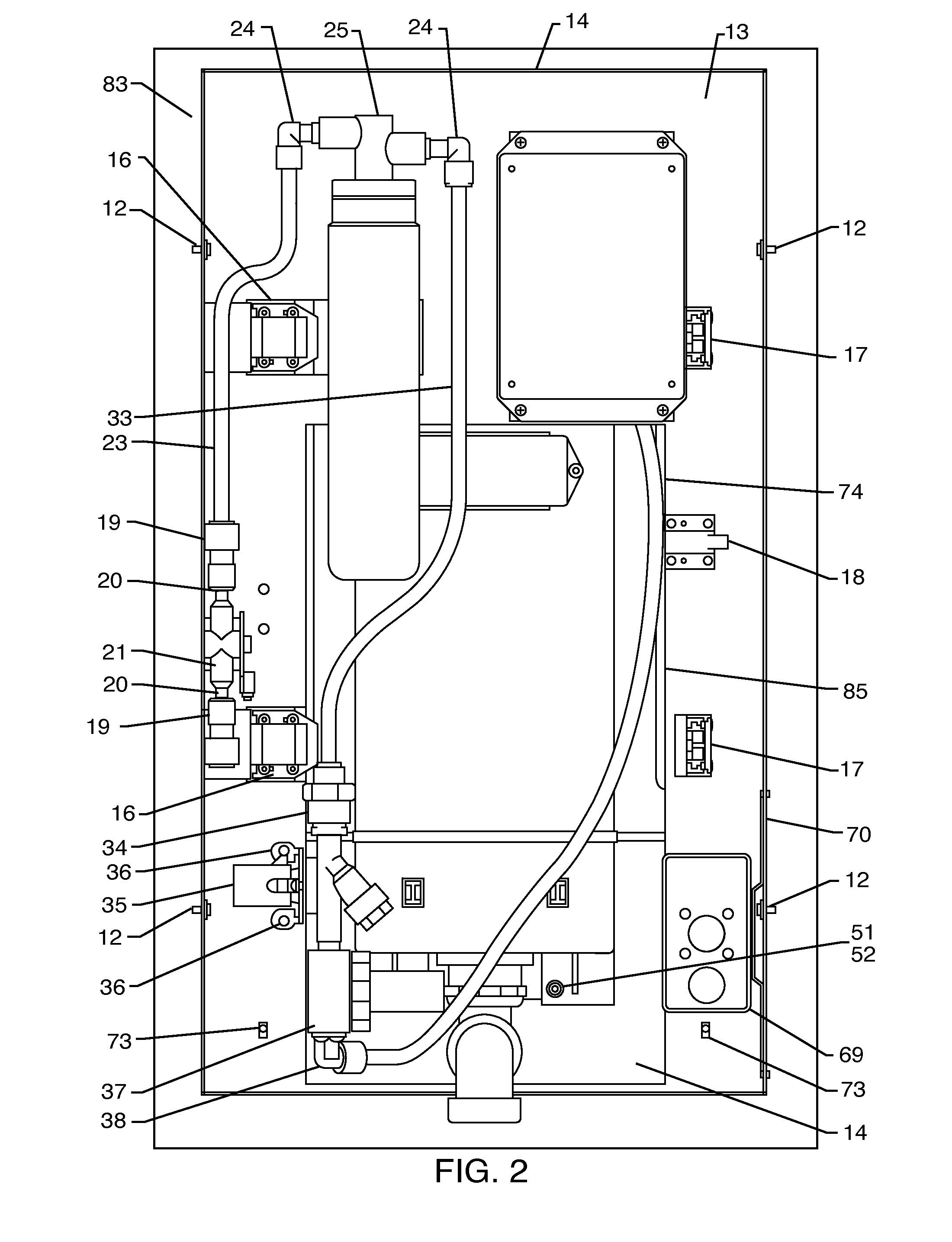Hydration station
- Summary
- Abstract
- Description
- Claims
- Application Information
AI Technical Summary
Benefits of technology
Problems solved by technology
Method used
Image
Examples
Embodiment Construction
[0033]As seen in the attached drawings, an improved hydration station comprises a main water dispenser assembly (denoted by reference numeral 10) in the form of a wall-mounted unit; a rectangular mounting frame 11 is used to provide support and mounting for the device (FIGS. 2 and 3); this mounting frame 11 has a number of holes through which mounting screws may be affixed into wall studs (not shown) or similar items of a wall 83 or the like. Four panel clips 12 (FIG. 2) provide an interface between this mounting frame 11 and a sheet metal panel 13 (FIG. 1) formed from stainless steel or the like. This sheet metal panel 13 in turn butts against the wall 83 and provides central mounting for the main components of the unit 10.
[0034]The main body of the wall-mounted device or unit 10 is split into two separate contoured panels which are situated on the outboard or end-user side of the device (FIG. 1). A lower body panel 14 is a stationary piece which houses the drain and waste, while a...
PUM
| Property | Measurement | Unit |
|---|---|---|
| Time | aaaaa | aaaaa |
| Time | aaaaa | aaaaa |
| Flow rate | aaaaa | aaaaa |
Abstract
Description
Claims
Application Information
 Login to View More
Login to View More - R&D
- Intellectual Property
- Life Sciences
- Materials
- Tech Scout
- Unparalleled Data Quality
- Higher Quality Content
- 60% Fewer Hallucinations
Browse by: Latest US Patents, China's latest patents, Technical Efficacy Thesaurus, Application Domain, Technology Topic, Popular Technical Reports.
© 2025 PatSnap. All rights reserved.Legal|Privacy policy|Modern Slavery Act Transparency Statement|Sitemap|About US| Contact US: help@patsnap.com



